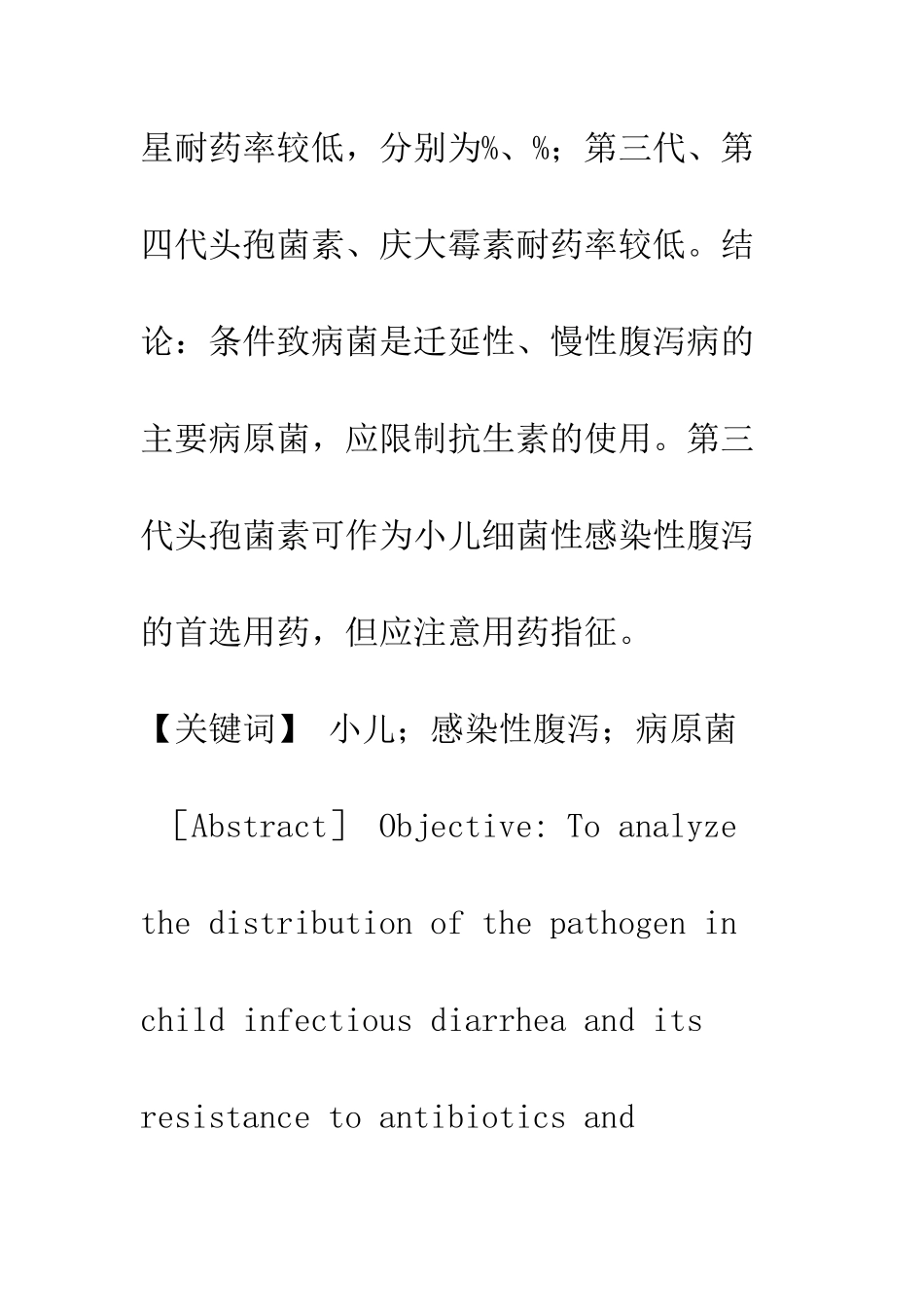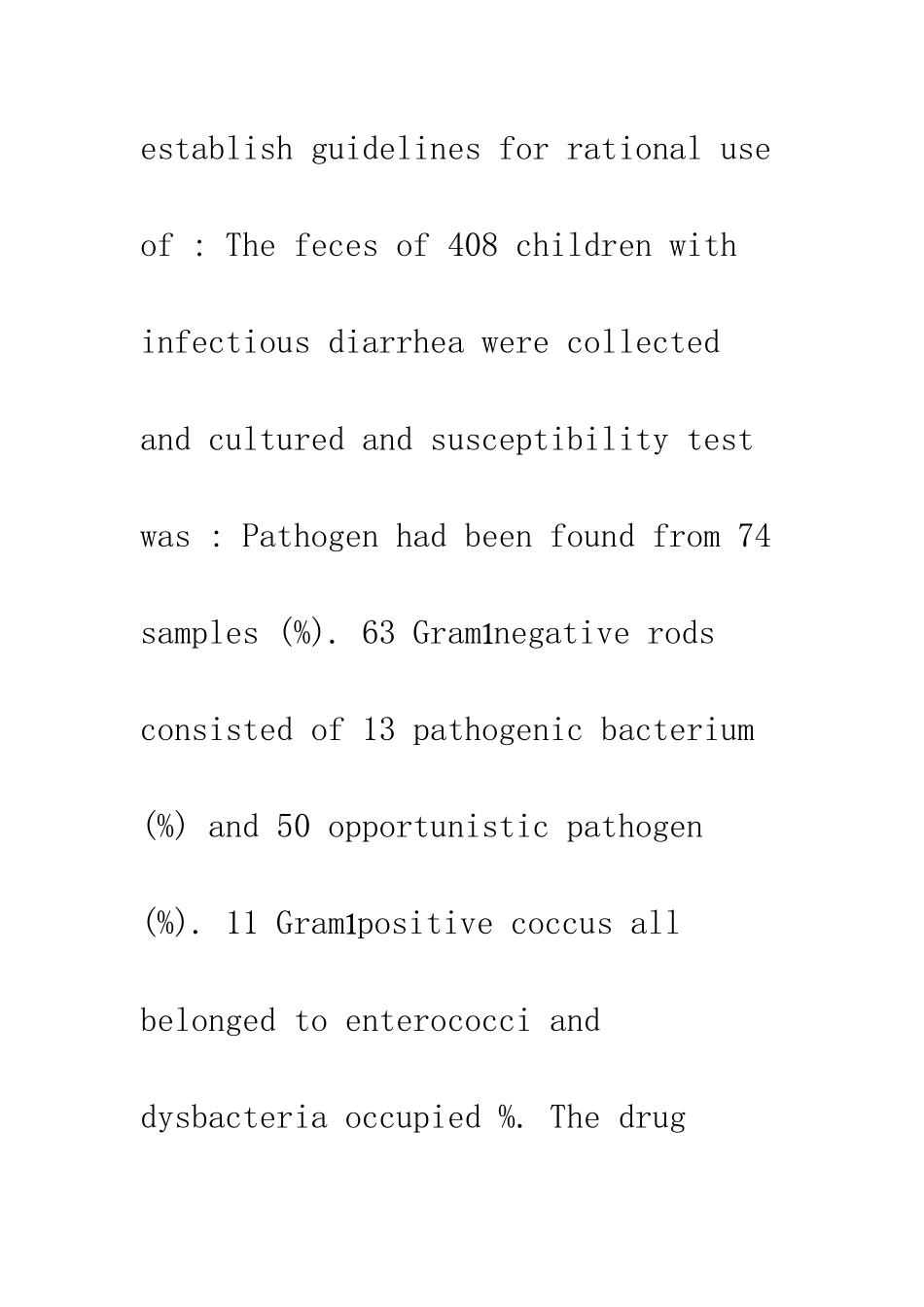我院感染性腹泻患儿病原菌及药敏分析【摘要】 目的:分析小儿感染性腹泻病原菌及其耐药情况,以指导临床合理用药。方法:对 408 例感染性腹泻患儿粪便标本进行分离培育,并对检出的细菌按 K B法进行药敏试验。结果:共 74 例分离出病原菌,总阳性率为%。G-杆菌 63 株中致病菌 13 株,条件致病菌 50 株。G+球菌 11 株全为肠球菌。菌群失调占%。氨苄西林耐药率最高达%,美洛西林、复方新诺明耐药率较高,分别为%、%;阿米卡星、左氧氟沙星耐药率较低,分别为%、%;第三代、第四代头孢菌素、庆大霉素耐药率较低。结论:条件致病菌是迁延性、慢性腹泻病的主要病原菌,应限制抗生素的使用。第三代头孢菌素可作为小儿细菌性感染性腹泻的首选用药,但应注意用药指征。【关键词】 小儿;感染性腹泻;病原菌 [Abstract] Objective: To analyze the distribution of the pathogen in child infectious diarrhea and its resistance to antibiotics and establish guidelines for rational use of : The feces of 408 children with infectious diarrhea were collected and cultured and susceptibility test was : Pathogen had been found from 74 samples (%). 63 Gram negative rods consisted of 13 pathogenic bacterium (%) and 50 opportunistic pathogen (%). 11 Gram positive coccus all belonged to enterococci and dysbacteria occupied %. The drug resistance to ampicillin was highest (%) and thus followed by mezlocillin and SMZ TMP (% and % respectively). The resistance to amikacin and levofloxacin were low (% and % respectively) and thus to the third and fourth generation cephalosporins and : The opportunists were main pathogenic bacterium of persisting and chronic diarrhea disease. The third generation cephalosporins could be the first consideration. [Key words] Child; Infectious Diarrhea; Bacterium 目前,在我国 5 岁以下就诊患儿中,小儿感染性腹泻仅次于呼吸道感染。随着抗生素的广泛使用,细菌耐药率明显上升,非致病菌诱发感染性腹泻明显增多。迁延性及慢性腹泻病的问题已引起国内外学者的重视。现...


